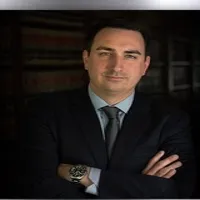How Do You Present Pivotal Forensic Evidence in Court?
Forensic evidence can make or break a case in the courtroom. This article delves into the critical aspects of presenting pivotal forensic evidence effectively, drawing insights from experts in the field. From cell phone data to DNA analysis, readers will discover how various forms of forensic evidence can significantly impact legal outcomes.
- Cell Phone Data Exonerates Home Invasion Suspect
- DNA Evidence Challenges Lead to Acquittal
- Forensic Accounting Exposes Financial Fraud Scheme
- CCTV Analysis Reverses Guilty Plea
Cell Phone Data Exonerates Home Invasion Suspect
I represented a young man accused of participating in a home invasion, largely based on a shaky eyewitness identification and circumstantial ties to one of the suspects. What cleared him was cell phone location data. Working with a digital forensic expert, we obtained metadata from his phone that showed he was several miles away at the time of the crime, using apps and making calls. The prosecution attempted to downplay the evidence, but we presented the timeline alongside cell tower data and a forensic analyst's testimony. The digital trail told a more reliable story than any witness could. He was acquitted, and that case reaffirmed the importance of integrating modern forensic technology into the courtroom effectively.

DNA Evidence Challenges Lead to Acquittal
We had a high-profile homicide case in which my client was accused of fatally stabbing a man during a robbery. The prosecution's case hinged on the presence of my client's DNA under the victim's fingernails. However, after bringing in a forensic DNA expert, we were able to show that the DNA sample was a partial, mixed profile—likely transferred through secondary contact. More importantly, it matched multiple individuals, not just my client. We used this to illustrate reasonable doubt, highlighting how the state had over-relied on contaminated or incomplete evidence. The jury ultimately found my client not guilty, and the case served as a clear example of how nuanced forensic evidence can shift the entire direction of a trial when properly explained and challenged.

Forensic Accounting Exposes Financial Fraud Scheme
In a criminal fraud case I handled, forensic accounting evidence was key to revealing the extent of financial manipulation. The opposing party had presented superficially legitimate transaction records, but our forensic expert reconstructed cash flow using metadata from deleted spreadsheets and backup logs. This evidence contradicted sworn statements and ultimately led to a conviction.
What made the forensic evidence pivotal was not only its technical accuracy but also how we integrated it into a clear courtroom narrative. We prepared the expert witness to explain complex data in simple language, reinforced with annotated visual exhibits admissible under procedural rules. Judges and juries are more likely to engage with forensics when it's not buried in jargon but tied directly to motive or misrepresentation.
This case reaffirmed a principle I now apply consistently: forensic evidence becomes powerful when it's humanized, contextualized, and legally framed to withstand scrutiny.

CCTV Analysis Reverses Guilty Plea
I encountered a case where the client had pleaded guilty to an assault charge. He entered his plea before having an opportunity to view the CCTV evidence. The client had been persuaded by the court-appointed lawyer to admit to the allegation.
The client approached us several months after pleading guilty, expressing a desire to reopen his guilty plea. We obtained the CCTV footage from the prosecution, but it was unclear due to the poor quality and unfavorable angle of the recording.
We engaged a forensic CCTV analyst who was able to deconstruct the footage. The expert provided a report that clearly demonstrated our client had been acting in self-defence. We were able to use this report to mount a successful appeal. As a result, the client's conviction was quashed, and he was able to reclaim his legal costs.


